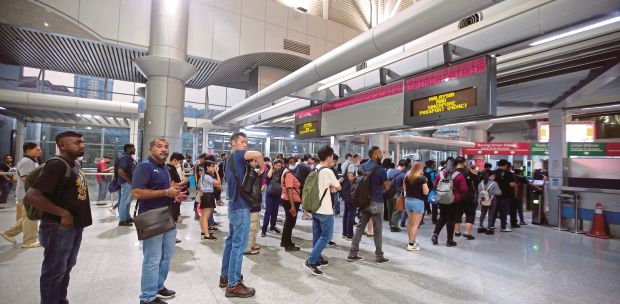JOHOR BARU: The world's busiest land border crossing turns 100 tomorrow.
In commemoration of the Johor Causeway's centenary, the sons of His Majesty Sultan Ibrahim, King of Malaysia, — the Regent of Johor Tunku Ismail, Tunku Temenggong Tunku Idris, Tunku Panglima Tunku Abdul Rahman and Tunku Putera Tunku Abu Bakar — will attend a ceremony at the point where the foundation stone was laid a century ago.
Johor Menteri Besar Datuk Onn Hafiz Ghazi, state executive council members, state secretary, dignitaries and their Singaporean counterparts will also be present.
Today, more than 300,000 commuters use the kilometre-long Causeway, which goes over the Johor Strait, to travel to and from Singapore daily.
The Causeway is not merely a vital link between two countries, but also stands as a testament to engineering excellence and historical significance.
The iconic link has played a pivotal role for transport facilitation, as well as economic and cultural exchange between the Malaysia and Singapore.
It also symbolises the rich history and close relationship established prior to Sultan of Johor Sultan Sir Ibrahim Sultan Abu Bakar's regiment.
The Causeway was Malaysia's first land route to Singapore, designed by architecture firm Coode, Fitzmaurice, Wilson and Mitchell in Westminster, London, and constructed by Topham, Jones and Railton Ltd.
The idea for the construction happened in 1919, after the Johor government's administration moved from Teluk Belanga in Singapore to Tanjung Puteri in Johor in 1841.
Some 13 years later, after the administration moved out of the island republic, the Johor government signed a friendship treaty with the British affirming its status as a free and sovereign state.
Construction of the Johor Causeway kicked off in late 1919, marking the beginning of an ambitious project to connect the Malay peninsula and the island of Singapore.
In 1920, a foundation stone was laid in the middle of the Johor Strait, symbolising the cooperation between Singapore, which was under British colonial administration, and the Johor government.
After five years of construction, the 1,056-metre-long and 18-metre-wide Causeway was officially opened by the Governor of the Straits Settlements, Sir Laurence Nunns Guillemard, on June 28, 1924.
A landmark agreement defining the maritime boundaries between Singapore and Johor was signed by the British government and Sultan Sir Ibrahim of Johor in 1927.
This solidified the territorial demarcation between the two regions.
The Causeway underwent turbulent times during World War 2. British forces destroyed part of it in an effort to delay the Japanese advance into Malaya.
Its historical milestones include the 1962 Johor River Water Agreement with Singapore, promising the supply which Singaporeans enjoy until today besides strengthening bilateral relations.
Singapore's separation from Malaysia in 1965 led to the establishment of border controls and Immigration checkpoints on the Causeway, formalising the link's role as an international boundary.
Fast forward to 1998, in a move to alleviate traffic congestion on the Causeway, the Second Link was opened connecting Tanjung Kupang in Johor to Tuas in Singapore.
The Causeway continues to be a vital artery for commerce, tourism and daily commuting, which reflects its enduring legacy and evolving role in the region's connectivity.
Tomorrow, the sons of His Majesty Sultan Ibrahim, King of Malaysia, — the Regent of Johor Tunku Ismail, Tunku Temenggong Tunku Idris, Tunku Panglima Tunku Abdul Rahman and Tunku Putera Tunku Abu Bakar — will attend a commemoration ceremony at the point where the foundation stone was laid a century ago.
Johor Menteri Besar Datuk Onn Hafiz Ghazi, state executive council members, state secretary, dignitaries and their Singaporean counterparts will also be present.
Tomorrow's ceremony will include the release of 100 doves to symbolise the Causeway's journey onwards.






